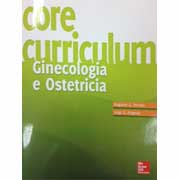294- Long-term follow-up is crucial after treatment for granulosa cell tumours of the ovary.
292- Long-term follow-up is crucial after treatment for granulosa cell tumours of the ovary.
Mangili G, Ottolina J, Gadducci A, Giorda G, Breda E, Savarese A, Candiani M, Frigerio L, Scarfone G, Pignata S, Rossi R, Marinaccio M, Lorusso D.
Br J Cancer. 2013 Jul 9;109(1):29-34.2013 Jun 11.
Objective: The aim of this study is to evaluate the long-term outcome of granulosa cell tumour (GCT) of the ovary in a large series of patients treated in MITO centres (Multicentre Italian Trials in Ovarian Cancer) and to define prognostic parameters for relapse and survival.Methods:A retrospective multi-institutional review of patients with GCTs of the ovary treated or referred to MITO centres was conducted. Surgical outcome, intraoperative and pathological findings and follow-up data were analysed. Kaplan-Meier and Cox proportional hazards analyses were used to determine the predictors for survival and recurrence.Results:A total of 97 patients with primary GCT of the ovary were identified. The median follow-up period was 88 months (range 6-498). Of these, 33 patients had at least one episode of disease recurrence, with a median time to recurrence of 53 months (range 9-332). Also, 47% of recurrences occurred after 5 years from initial diagnosis. At multivariate analysis, age and stage were independent poor prognostic indicators for survival; surgical treatment outside MITO centres and incomplete surgical staging retained significant predictive value for recurrence in both univariate and multivariate analyses.Conclusions:This study confirms the generally favourable prognosis of GCTs of the ovary, with 5-year overall survival approaching 97%. Nevertheless, prognosis after 20 years was significantly poorer, with 20-year survival rate of 66.8% and a global mortality of 30-35. These findings support the need for lifelong follow-up even in early-stage GCT.
